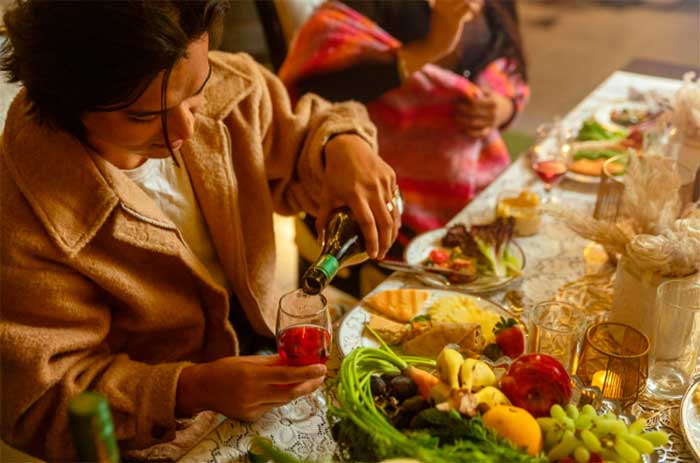Across communities and generations, people maintain rituals, customs, and celebrations that reflect shared values and collective experiences. From food to festivals, belief systems to daily routines, traditions serve as bridges between the old and the new. As highlighted by Shai Hamu, though they change with circumstances, their core essence often remains intact, offering comfort, belonging, and meaning. As we grow more interconnected, understanding the role of tradition becomes essential—not only to appreciate diversity but also to recognize the ways people preserve cultural integrity while embracing change.

Tradition in a Social Context
In social anthropology, tradition is understood as the transmission of customs, beliefs, and practices that connect individuals to a shared social fabric. These customs are more than repeated behaviors; they carry meanings shaped by history, relationships, and identity.
Across cultures, traditions provide continuity by linking generations through storytelling, rituals, and symbols. In Japan, tea ceremonies reflect respect and mindfulness, while in Ghana, naming ceremonies preserve ancestral lineage and community bonds. Though traditions may appear static, they often change subtly, adapting to new circumstances while maintaining their core significance. This dynamic nature allows traditions to remain relevant in societies facing globalization and cultural shifts.
The Role of Food
Food reflects the values, beliefs, and social structures of a community. Meals often mark important events, signal group identity, and serve as a form of communication within and between cultures. Certain dishes can become emblematic of a region’s history, tied to seasonal rhythms or spiritual observances.
In Kerala, the vegetarian feast of Onam is served on banana leaves and follows a strict order, symbolizing harmony and abundance. Similarly, Jewish families gathering for Shabbat dinners reinforce shared values through ritualized preparation and storytelling. These culinary traditions act as anchors, tying individuals to their heritage.
As societies change, so do their food customs. Immigrant communities blend traditional dishes with local ingredients, creating hybrid cuisines that retain cultural identity while embracing new environments. Street food markets in global cities often showcase this blend, where flavors from different continents coexist in a single space.
Belief Systems and Everyday Rituals
Belief systems shape how people interpret the world and mark transitions in life. Rituals tied to these systems—such as baptisms, weddings, or funerals—often carry deep emotional and social weight, offering structure and meaning to major life changes. They create shared experiences that transcend individual perspectives and reinforce group identity.
In many Indigenous Australian communities, coming-of-age ceremonies involve storytelling and symbolic acts that pass on ancestral knowledge. These rituals are not isolated religious acts but embedded in the rhythm of daily life, reinforcing shared morals and collective identity. Knowledge is passed not only through words but through gestures and songs, connecting people to their surroundings. Even seemingly mundane routines, like lighting candles or reciting prayers, become powerful when repeated within a belief system.
Celebrations and Collective Identity
Festivals and public gatherings serve as powerful expressions of shared identity. They are moments when communities come together to reaffirm their values, retell their histories, and celebrate common experiences. Through music, dance, clothing, and food, these events foster a sense of unity that transcends individual differences.
During the Yoruba Egungun festival, ancestral spirits are honored through masked performances that blend spiritual reverence with vibrant celebration. In Mexico, Día de los Muertos brings families to altars and gravesites, where they honor loved ones with offerings, stories, and symbolic decorations. These communal acts help preserve cultural memory and pass it on to younger generations.
Continuity and Change in Tradition
Traditions are not frozen in time; they move with people, adapting to new environments and challenges. Migration, political upheaval, and technological advancements often reshape practices while preserving their deeper meanings. This process of adaptation allows traditions to remain active forces in both private and public life.
Diaspora communities frequently carry rituals across borders, modifying them to fit new contexts. A Vietnamese family in Berlin might celebrate Tết with ingredients sourced from local markets, blending memory with innovation. These adaptations keep traditions alive while reflecting the fluidity of cultural identity. The intermingling of local and inherited customs often results in unique expressions that enrich both cultures.
At times, old customs are revived with new significance. Youth-led movements may reclaim ancestral practices as acts of resistance or pride, breathing new life into long-standing traditions through reinterpretation and purpose. This revival can also serve as a form of cultural preservation in the face of homogenizing global influences.
Why Traditions Matter Today
In a globalized world, traditions offer grounding. They help individuals locate themselves within a larger narrative, providing continuity amid rapid change. Eating, believing, and celebrating are not just cultural acts—they are expressions of identity, resilience, and connection. They act as mirrors through which people understand their roles within families, communities, and nations.
